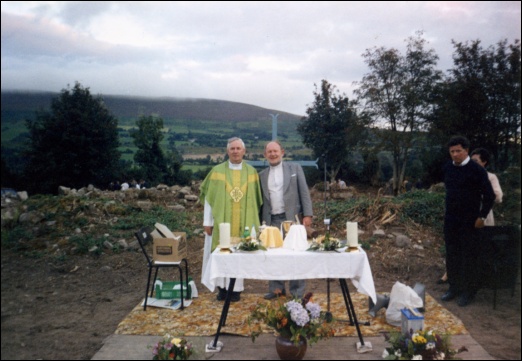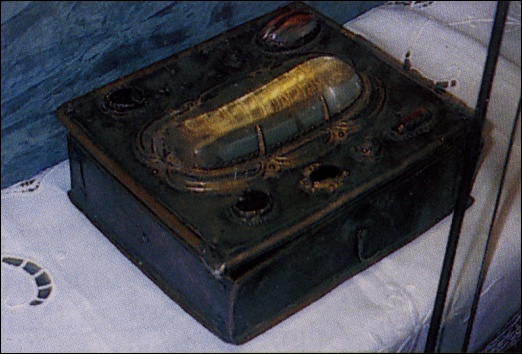Attractions
ST. MOLING’S CEMETERY, BALLINREE
The interior of the ruins consist of a stoned building approx. 20 feet by 8 feet by 2 feet high and are called after celebrated St. Moling who is buried in St. Mullins about 20 miles south of here. The ruined building would seem to suggest a type of oratory and would indicate a hermitage rather than a monastic settlement. St. Moling was a seventh century Saint whose life was well documented. His greatest feat was the remission of the Borumean Tribute which was a tax levied for five hundred years by the High Kings of Ireland on the people of Leinster and had to be paid every second year. The levy consisted of 5000 ozs. of silver, 5000 cloaks, 5000 fat cows, 5000 fat hogs, 5000 fat wethers and 5000 large vessels of brass or bronze.

Mass in St. Moling's Cemetery, Ballinree - August 1990

"Liath Meiscith" brass shrine for The Book of Mulling
The Book of Mulling, a 7th
century pocket manuscript of the four gospels written in Latin but in
the Irish script is preserved and displayed in Trinity College, Dublin
with the Book of Kells and the Book of Durrow. The shrine or box of the
Book of Mulling belongs to the Kavanagh family, Borris House. Called the
“Liath Meiscith” it is made of brass, cased with silver and decorated
with jeweled stones and has the name of Art MacMurrough inscribed on
the lid.
